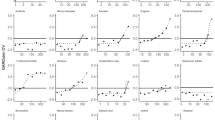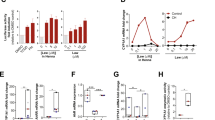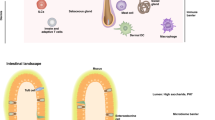Abstract
The potential to cause human skin irritation responses is part of the required information for the registration of new chemicals and for chemicals to conform to the new EU Chemical regulations under Registration, Evaluation, and Authorisation of Chemicals (REACH). The Fund for Replacement of Animals in Medical Experiments (FRAME) has developed an in vitro assay for potential human irritant responses via the skin, employing human passage 1–3 primary keratinocytes. The assay is based on two assessments: a direct assay of keratinocytes and an assay of the effect on macrophages of the mediators released by the keratinocytes. Keratinocyte activity is measured by the resazurin assay. Mediator activity is measured by assaying the release of nitric oxide (NO) following macrophage stimulation. It is also possible to measure release of interleukin-1α (IL-1α). Additional mediators are also released, but the precise range and composition of all these mediators are not clear at present. From time of exposure, this assay can be completed in 3–7 d; the exact timing is dependent on the rate and degree of recovery.
This is a preview of subscription content, access via your institution
Access options
Subscribe to this journal
Receive 12 print issues and online access
$259.00 per year
only $21.58 per issue
Buy this article
- Purchase on Springer Link
- Instant access to full article PDF
Prices may be subject to local taxes which are calculated during checkout

Similar content being viewed by others
References
Andrews, M.J., Garle, M.J. & Clothier, R.H. Reduction of the new tetrazolium dye Alamar Blue in cultured rat hepatocytes and liver fractions. Altern. Lab. Anim. 25, 641–653 (1997).
O'Brien, J., Wilson, I., Orton, T. & Pognan, F. Investigation of the Alamar Blue (resazurin) fluorescent dye for the assessment of mammalian cell cytotoxicity. Eur. J. Biochem. 267, 5421–5426 (2000).
Green, L.C. et al. Analysis of nitrate and nitrite in biological fluids. Anal. Biochem. 126, 131–138 (1982).
Garle, M., Bull, S., Willshaw, A., Ward, R.K. & Clothier, R.H. Nitrite synthesis in a murine macrophage cell line stimulated by products released from irritant treated normal human keratinocytes. Toxicol. Vitro 10, 265–271 (1996).
Garside, J.R., Clothier, R.H., Somekh, M.G. & Wah See, C. The use of simultaneous fluorescence and differential phase confocal microscopy to study Alamar Blue reduction in an epithelial cell line. Altern. Lab. Anim. 26, 505–522 (1998).
Clothier, R.H. et al. The prediction of human skin responses by using the combined in vitro fluorescein leakage/Alamar Blue (resazurin) assay. Altern. Lab. Anim. 30, 493–504 (2002).
ECETOC. Skin Irritation (monograph) (European Chemical Industry Ecology & Toxicology Centre, Brussels, 1990).
Acknowledgements
This work was sponsored by the industrial supporters of the FRAME Research Programme.
Author information
Authors and Affiliations
Corresponding author
Ethics declarations
Competing interests
The authors declare no competing financial interests.
Rights and permissions
About this article
Cite this article
Clothier, R., Khammo, N. Normal human keratinocyte assay to predict the human irritancy response. Nat Protoc 1, 444–451 (2006). https://doi.org/10.1038/nprot.2006.65
Published:
Issue Date:
DOI: https://doi.org/10.1038/nprot.2006.65
Comments
By submitting a comment you agree to abide by our Terms and Community Guidelines. If you find something abusive or that does not comply with our terms or guidelines please flag it as inappropriate.



